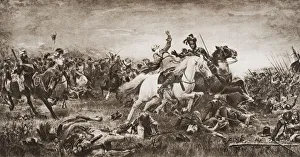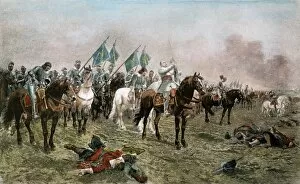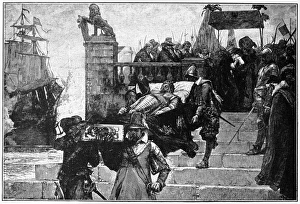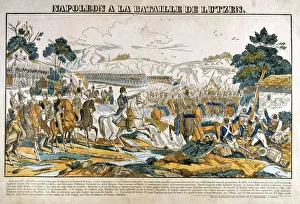Lutzen Collection
"Lutzen: A Historic Battlefield of Triumph and Tragedy" The Battle in 1632 marked a pivotal moment in history
All Professionally Made to Order for Quick Shipping
"Lutzen: A Historic Battlefield of Triumph and Tragedy" The Battle in 1632 marked a pivotal moment in history, as the Swedish King Gustavus Adolphus prepared to face his adversaries. Captured through engravings and gravures, we catch a glimpse of the determination etched on his face before this fateful clash. However, tragedy struck as Gustavus Adolphus met his untimely demise at Lutzen. The somber engravings depict the sorrowful end of a great leader who fought valiantly for his cause. Centuries later, another battle unfolded near Lutzen. In 1813, Napoleon's French forces clashed with the Allies led by Wittgenstein. This time it was the French who emerged victorious, leaving their mark on history once again. Russian troops retreated across the Elbe after this encounter, captured vividly by artist Sauerweid's brushstrokes. The aftermath of war is evident in these scenes - scars left upon both soldiers and landscapes alike. In 1815, Thomas Sutherland immortalized the Allied commanders at Leipzig following their defeat at Lutzen. Their faces reveal a mix of determination and resilience as they regrouped for future battles yet to come. As conflicts raged on during that era, Edme Bovinet's artwork brings us back to May 2nd, 1813 – capturing the intensity and chaos that engulfed those involved in the Battle of Lutzen. Napoleon himself stood amidst this turmoil; an iconic figure leading from within. His presence looms large over Bovinet's depiction – a testament to his strategic prowess even amidst adversity. Lutzen remains etched into history as more than just a name or location; it symbolizes valorous triumphs and heart-wrenching losses throughout different eras.



























